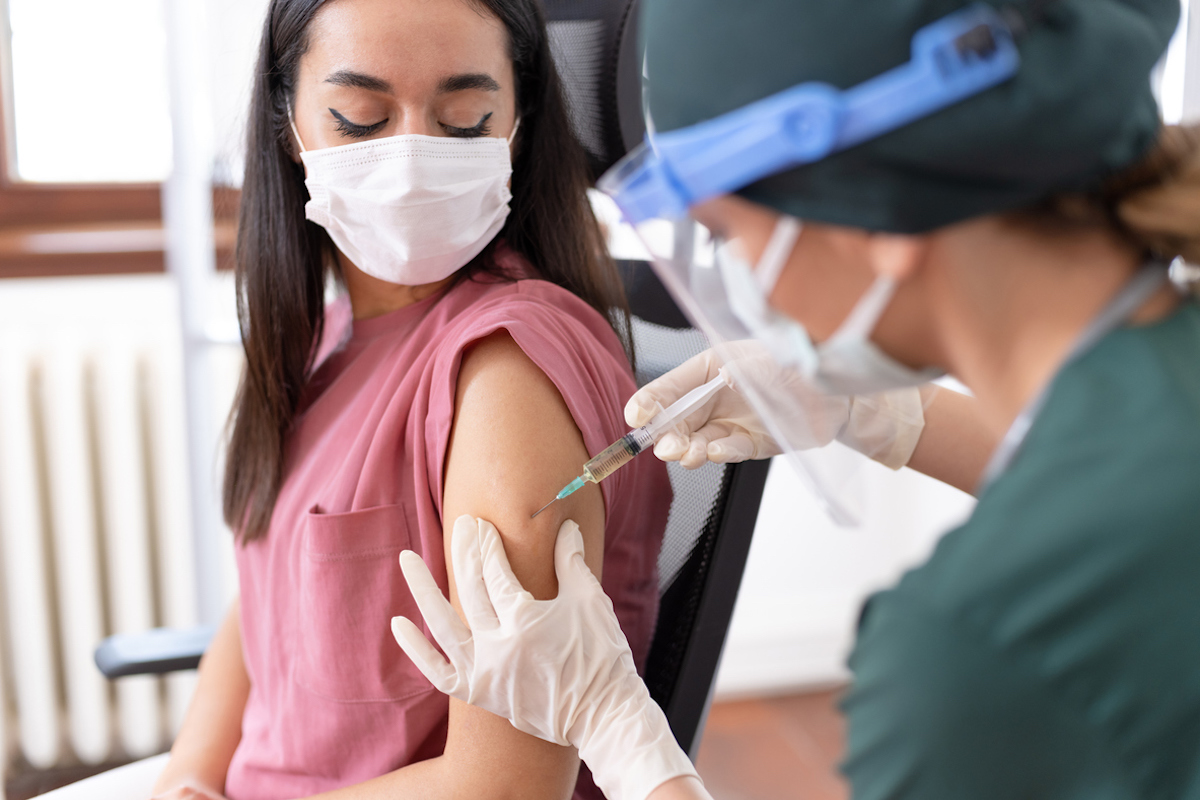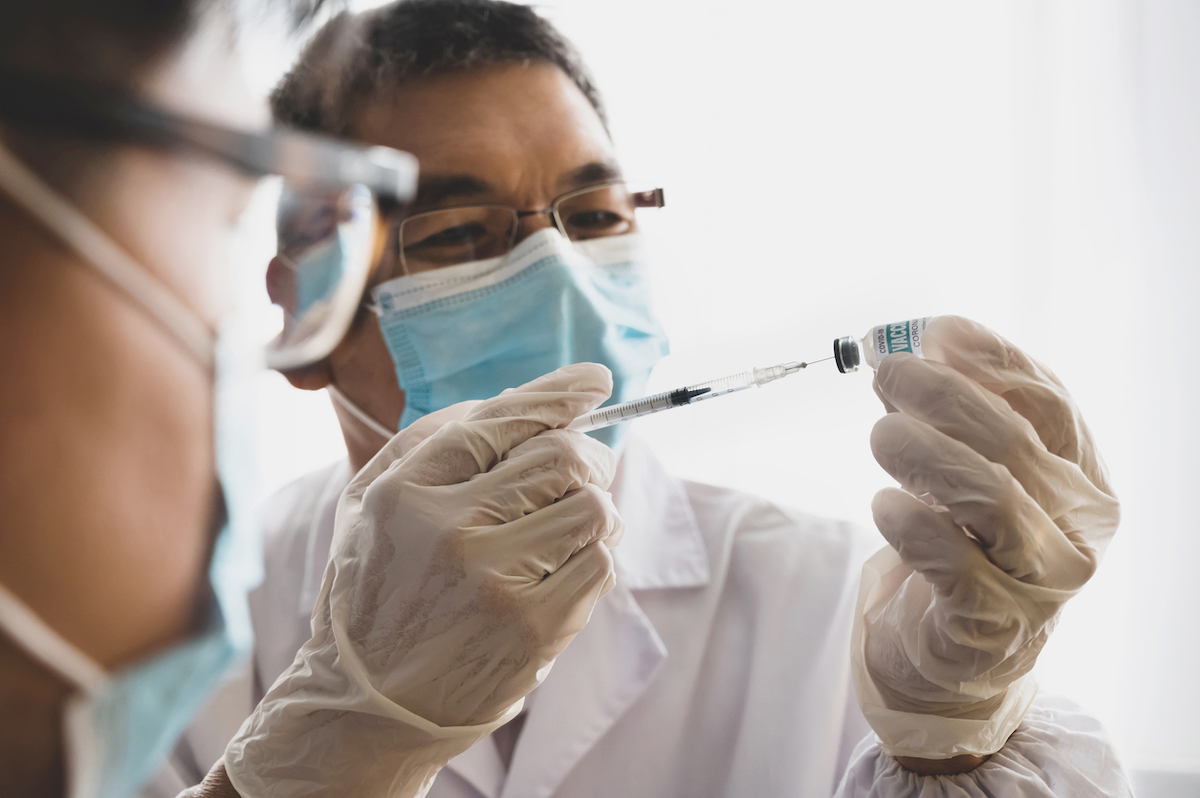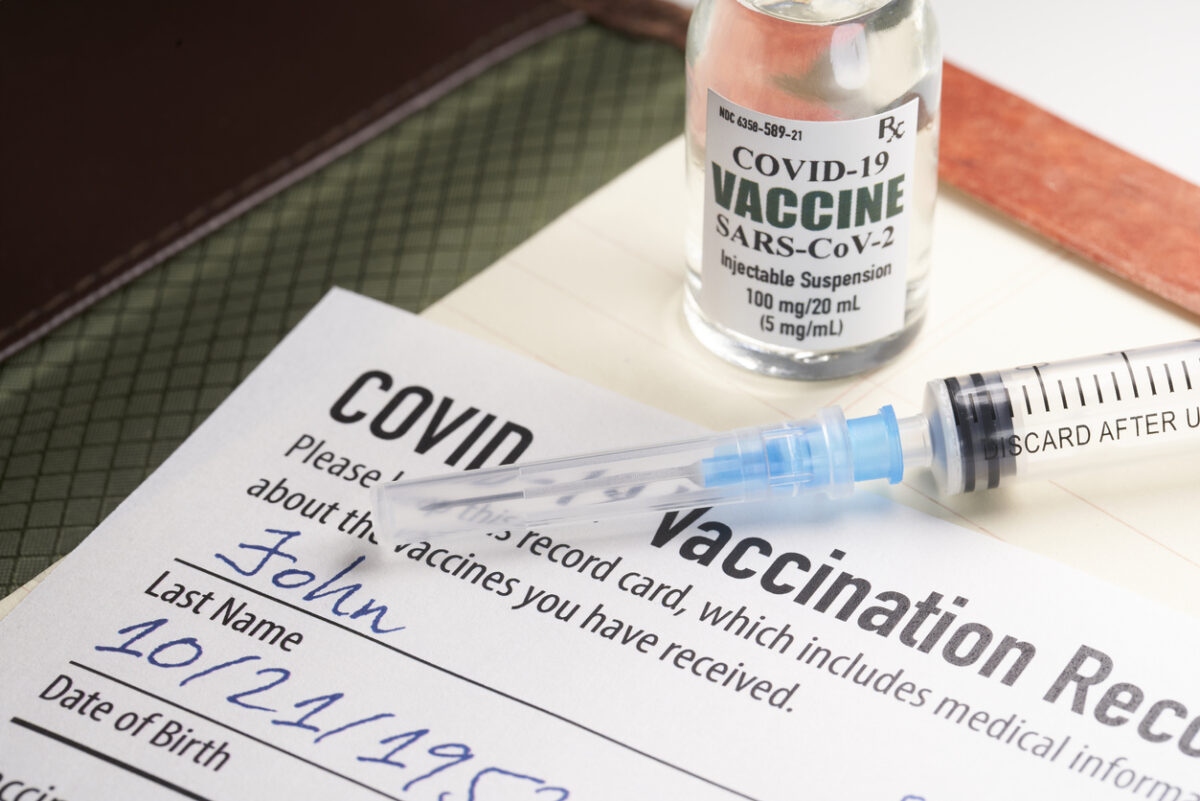Vaccines work by introducing your immune system to a new infection and priming it to recognize and fight off that disease if you were to later encounter it for real. Both the Pfizer and Moderna vaccines contain a strand of genetic material called mRNA. When this enters your cells, it triggers them to make a piece of the spike protein that is on the coronavirus that causes COVID-19. While it doesn’t harm your body or cause COVID-19 infection, it does trigger your immune system to think that it’s under attack and to mount a response to fight it off. Your healthy cells then overwhelm those which have replicated the spike protein, and throughout this exchange, antibodies specific for COVID-19 are generated and leave you with future protection. The Johnson & Johnson vaccine meanwhile was created using a non-replicating adenoviral vector, where a tiny piece of genetic material from COVID is inserted into a weakened version of the common cold virus, which was altered so it can enter cells but not replicate inside of them, the pharmaceutical company explains. This again teaches your immune system to make antibodies against the coronavirus, so that if you were to come in contact with the real virus later on, you will then be able to fight it off more efficiently. And for more COVID news delivered right to your inbox, sign up for our daily newsletter. With so much reassurance being offered to the American public that vaccine side effects are nothing to be concerned about, those without them may be worried that a lack of side effects indicates the vaccine didn’t work as effectively. But doctors say that’s not the case. “If you get this vaccine and you don’t experience any side effects, it doesn’t mean that it’s not initiating a strong immune response,” explained Wendell Hoffman, MD, an infectious disease specialist at Sanford Health, in an article for the health care company’s website. Leana Wen, MD, a practicing physician and op-ed columnist for The Washington Post, assured readers, “People respond differently to vaccines. Some experience side effects—this is normal and is a sign that the body is generating an immune response that will help to fight COVID-19 if exposed in the future. Some others don’t have side effects. That’s normal too, and there’s no reason to believe that the vaccine is less effective for them.” And for more on the newest side effects being discussed, check out The CDC Just Warned of 3 New Vaccine Side Effects. While much information has focused on the side effects people can expect after vaccination, those without sore arms or aches have expressed concern over their lack of side effects. On the Cleveland Clinic’s website, one person wrote in and asked, “If you don’t experience any symptoms, does that mean the vaccine, or your immune system, isn’t working?” In response, Thaddeus Stappenbeck, MD, Chairman of the Department of Inflammation and Immunity at Cleveland Clinic’s Lerner Research Institute, explained, “When you actually look at the statistics from the trials, most people didn’t have side effects. A little over 50 percent didn’t experience any side effects at all and remember, they were still 94 percent protected after receiving the vaccine. So, you don’t need to worry if you don’t have any symptoms after your COVID-19 vaccinations.” Stappenbeck added that he hoped further investigations would reveal why people respond differently to the virus. “With so many people getting vaccinated, the medical community is very interested in why some people experience all the symptoms while others don’t,” he wrote. “They’re still in the process of sorting this all out. Right now, we don’t understand it.” But, he added, the “main vaccines that have been approved for emergency use are effective whether or not you’ve developed side effects—and you don’t have to feel terrible to prove that you’re protected from COVID-19.” And for more on a strange reaction that’s cropped up, check out Doctors Want You to “Be Prepared” for This Delayed Vaccine Side Effect. If you do have side effects, the CDC says they’ll come in two varieties. Firstly, the localized reaction to the injection itself, in the form of pain, redness, and swelling. And secondly, a body-wide response, most commonly presenting as fever, chills, tiredness, headache, muscle aches, or nausea. “In most cases, discomfort from fever or pain is normal,” they write. However, they say there are two situations in which you should call your doctor: “If the redness or tenderness where you got the shot gets worse after 24 hours,” or, “If your side effects are worrying you or do not seem to be going away after a few days.” And for the side effects most common with the newest vaccine in particular, check out These Are the Side Effects of the New Johnson & Johnson Vaccine, FDA Says.ae0fcc31ae342fd3a1346ebb1f342fcb



